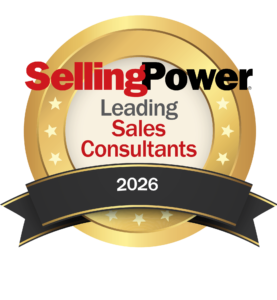The List that Will Change Your Life
Are your reps targeting all the potential buyers in their area – or the best potential buyers? It’s an important distinction, and one that acclaimed corporate trainer and business growth expert Chet Holmes drives home in his new book, The Ultimate Sales Machine (Portfolio, 2007). As Holmes points out, there’s always a smaller number of “best buyers” than there are all buyers. These best buyers – which Holmes calls your Dream 100 – are the group who will spend more money, more quickly, and more often than other buyers. Do you have a list of these buyers? Do you target them consistently and relentlessly? Are they your absolute top priority? If not, read on to learn why you need this list and how it can turbocharge your sales.
Holmes stumbled upon his Dream 100 concept years ago when he was put in charge of ad sales for a magazine. He pulled up the database of potential advertisers and found himself staring at a list of 2,200 companies. He then did a market analysis and found that 167 of those companies bought 95 percent of the advertising in the top four magazines. What’s more, none of those 167 companies advertised in Holmes’s publication.
Armed with this information, Holmes began focusing relentlessly on these 167 buyers. In the first year, he got 30 of them into the magazine, doubling the publication’s ad sales. The following year, by continuing to target his “dream” list, he got another 30 and again doubled sales. The third year, he brought in the rest of the 167 buyers, doubling sales yet again. He says now his success was a result of knowing exactly who he was after and never giving up.
Here’s another example of the Dream 100 at work. Holmes once worked with a client that sold office equipment to businesses. After sending out a direct mail piece to 20,000 potential buyers and getting zero responses, company leaders realized they needed to make some radical changes. They called Holmes.
Holmes reviewed the company’s sales from the previous year and found deals ranging from $10,000 to $28,000 for computer systems it had installed. Holmes also saw a $160,000 sale. “What’s this?” he asked. When told it was a sale to a big company, Holmes asked, “Why don’t we just go after big companies?” Finding those “big companies” turned out to be easy: a search on www.zapdata.com revealed 2,000 of them in the area.
Next, Holmes and his client needed to find out which of those 2,000 companies had old computer systems on which they might be spending more on maintenance than they would on a lease for a brand-new system. To get this information, the client’s sales reps called every one of those 2,000 companies. To the receptionists who answered, the reps said, “Hi. We’re doing our annual survey and we’ve got just two questions: Can you tell us what type of computer system you have and how old it is?” A full 99.9 percent of the receptionists simply answered the question.
In just two days, the company discovered there were 508 dream buyers – large organizations with computer systems at least five years old. And many had systems whose original provider was now out of business. Holmes’s client shifted its focus to these 508 clients – its Dream 100 list – and sales went through the roof.
The bottom line: the Dream 100 strategy works, but only with 100 percent effort and determination on your part. Find your Dream 100 – whether it’s 100, 150, 300, or 500 buyers – then go after them again and again. Don’t give up. This winning combination – focusing on the right buyers and unyielding persistence – will blow away all your previous sales results.
For more information, visit www.chetholmes.com.
Get our Enewsletter
Get the latest sales leadership insight, strategies, and best practices delivered weekly to your inbox.
Sign up NOW →